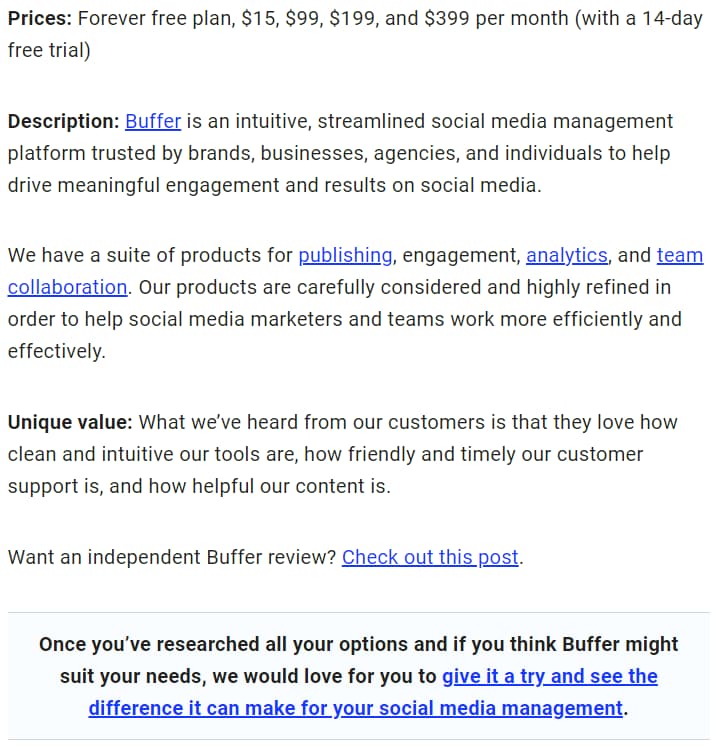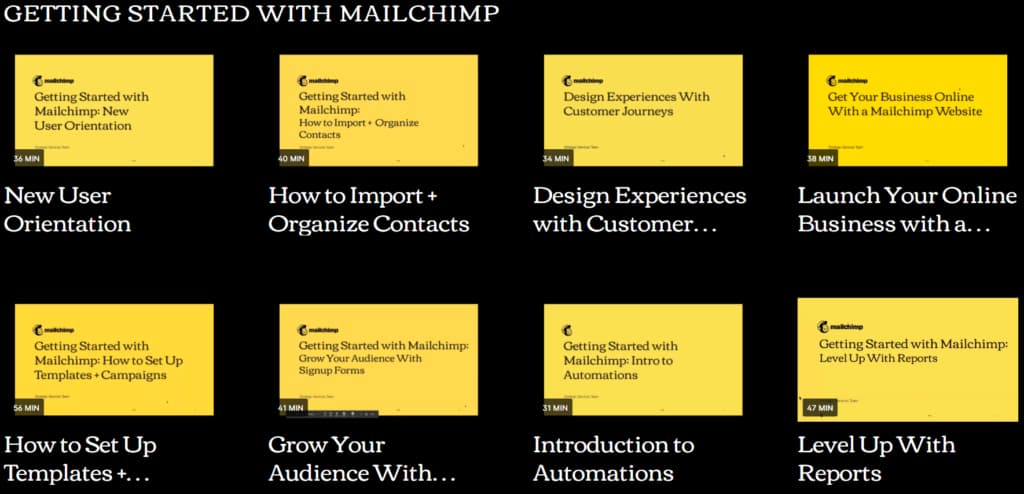
Attract, educate, convert, retain—these are the four pillars of SaaS marketing. Like most pillars, without one, the others fall away. Each marketing pillar relies on the last.
But what do they mean? How does one lead into the other? Here, we look at the four pillars of SaaS marketing and how you can use them for your own SaaS brand.
Attract
When it comes to SaaS marketing, content is key for attracting customers.
A solid content strategy is essential for pushing a SaaS product, part of an inbound marketing approach that gets your product in front of the right people by offering relevant value to drive qualified traffic to your site (and if you don’t know where to start, Seeker has you sorted).
Indeed, the best way to achieve this is to create content that directly answers the questions your various target audiences have.
You don’t want to extol the virtues of your SaaS product at this stage—that comes later. Right now, you want to attract prospective customers that will likely be interested in your product.
Build out your customer personas and use them to inform your content ideation. Different people will discover your product through different means, as they all have different pain points to resolve.
Naturally, keyword research is essential here. As well as helping you target long-tail keywords (typically in the form of questions) with higher conversion rates, this also lets you create content that actually answers real questions your target audience is likely to have.
If, for instance, you’re pushing a productivity and collaboration tool (think Slack or Basecamp), you might write about communication tips for remote teams or a guide to different project management methodologies.
In this example, such titles are relevant to their target audience, and serve as top-of-funnel content that gets prospective customers hooked into your marketing funnel.
As well as onsite content, consider offsite placements to drive organic traffic and increase rankings too.
Use an SEO tool like Ahrefs to build out a list of target websites based on your business keywords and related terms.
This helps you identify websites with qualified traffic, whose audience is likely to consist of prospective customers.
For example, if we stick with the aforementioned productivity and collaboration tool example, a list might consist of productivity and enterprise blogs with an audience of business owners or project managers.
Competitor analysis is worth doing here too.
Targeting websites where your competitors have already won links is a simple but effective means of getting your brand seen by pre-qualified audiences.
Reach out to these sites, offering a unique, quality piece of content that establishes your authority as a brand and value as a SaaS product.
For either of the tactics outlined above, a good pitch is key.
The prospects you reach out to will be inundated with emails just like yours, so it needs to shine. As ever, value is what will make your pitch stand out—what can you offer that your prospect will actually benefit from, and that is new and worthwhile.
(This is all part of Seeker’s own SaaS marketing service, and it’s something we excel at. Take the pressure off and let us do the work for you, blending content, outreach, and SEO to get real results).
Educate
Education is the second part of the first stage, going hand-in-hand with the ‘attract’ stage.
As alluded to above, what really attracts SaaS customers is value, specifically educational value that enhances their lives, way of working, and so on. The value you deliver should, of course, be related to your own niche. As well as attracting the right kind of potential customers, it also lets you flex your muscles as an authority within your industry—never a bad thing.
But as well as educating customers around your specific niche, this is also the time to educate them about your SaaS product and how it can help or resolve their own pain points too.
The trick is to sell your SaaS product’s value in a way that ties into wider value for your audience.
No-one wants to read a sales piece that just highlights why a product is so great. That’s not engaging or useful unless someone has already made the decision to sign up.
Instead, insert your SaaS product in the content in a way that highlights its obvious value, while still offering more general value to the reader.
Take this guide to the best social media management tools from Buffer, for instance.

Image Buffer
The title addresses a common search query (“best social media management tools”), related to Buffer’s niche and product, and with a lot of volume (and ranks highly for it).
The article offers a brief (and fairly-weighted) overview of the best social media management tools, placing Buffer’s own tool at the very top, peppered with links to independent reviews, free trials offers, and so on.
Of course, the risk here is that prospective customers might look through the rest of the list and try the other options. But chances are that the Buffer sales messaging is more likely to stand out, thus netting them sign-ups.
This is just one example, of course. You could well create a piece of content that answers a common industry query, and weave in references to your product (and your product alone) throughout, positioning it as a solution.
To really sell it, keep it simple and accessible. Outline the value of your SaaS product for your prospective customers in clear, concise terms.
And crucially, relate your value to the content title in question. Your product needs to be an essential part of the solution to the pain point your content addresses, as this is what gives it a hook, encouraging your customers to read more. This leads us nicely onto…
Convert
When you educate, you create value for your product in your customers’ eyes.
Where the first two pillars get the product noticed, this pillar converts them, capitalising on that value to turn interested visitors into paid-up customers, and free trials are a key part of that.
Indeed, for SaaS products, free trials are all but mandatory.
Beyond the fact that virtually all your competitors are offering a free trial, it’s also a valuable opportunity to hook prospective customers into your product.
Communicating the value of a SaaS product can be tricky, particularly if it’s in a very unique, specific niche.
And even if you’re selling a fairly common SaaS product that people are familiar with (ecommerce platforms, for instance), there are still enough variations in how a product works that can make or break a customer’s decisions to stick with it.
Free trials give prospective customers a chance to get hands-on with your product. It lets them try it on for size and, hopefully, decide to stick with it too.
But free trials are just one element of this. Combine them with free product demonstrations to provide personalised, one-to-one sessions to prospective customers. As well as helping them get to grips with your SaaS product, this also sparks a personal connection that acts as a strong foot-in-the-door for a sign-up.
Of course, once you’ve won a customer, the work doesn’t stop there…
Retain
The relationship between a brand and its customers is much like any other relationship—without continuous care and attention, it’ll wither, the magic will go, and you’ll drift apart.
How many times have you been signed up to a food delivery app, only to see new customers get offered all the bonuses and discount vouchers while you, the loyal customer, get nothing?
And when 65% of a brand’s business comes from existing customers, it’s important that your relationships with these clients are nurtured.
This starts with great customer support.
As your customers get used to your product, they will begin to take it further, customising it and applying it in new ways to achieve their desired goals.
Naturally, this means they will return to you often for advice and guidance on how to do this.
Provide your existing customers with quick online support, monitored forum threads, customer events (where applicable) and even, where possible, one-to-one video training sessions.
Email marketing software provider Mailchimp is particularly adept at this.

Image Mailchimp
It provides an array of resources for new and existing customers, including a number of video tutorials and webinars that walk users through a variety of different processes. Easy to understand and tailored to specific user needs, it’s exactly the kind of useful content that will retain Mailchimp’s customer base.
Part of this customer support strategy means continuously listening to your customers and their concerns (social media monitoring is a good way to stay on top of this).
Discover what your existing users are saying about your product, what features they want to see, and how they’re using your product for their own needs, and so on.
Take note of your users’ concerns and bear them in mind—their suggestions could well make for useful features to be included in a future software update.
There you have it, the four pillars of SaaS marketing. This is just an overview, of course—in practice, such an approach requires solid groundwork and granular tactics to make it work.
Want to implement it for your own brand? Get in touch—we do SaaS marketing right at Seeker, and can help your SaaS brand grow and grow too.
